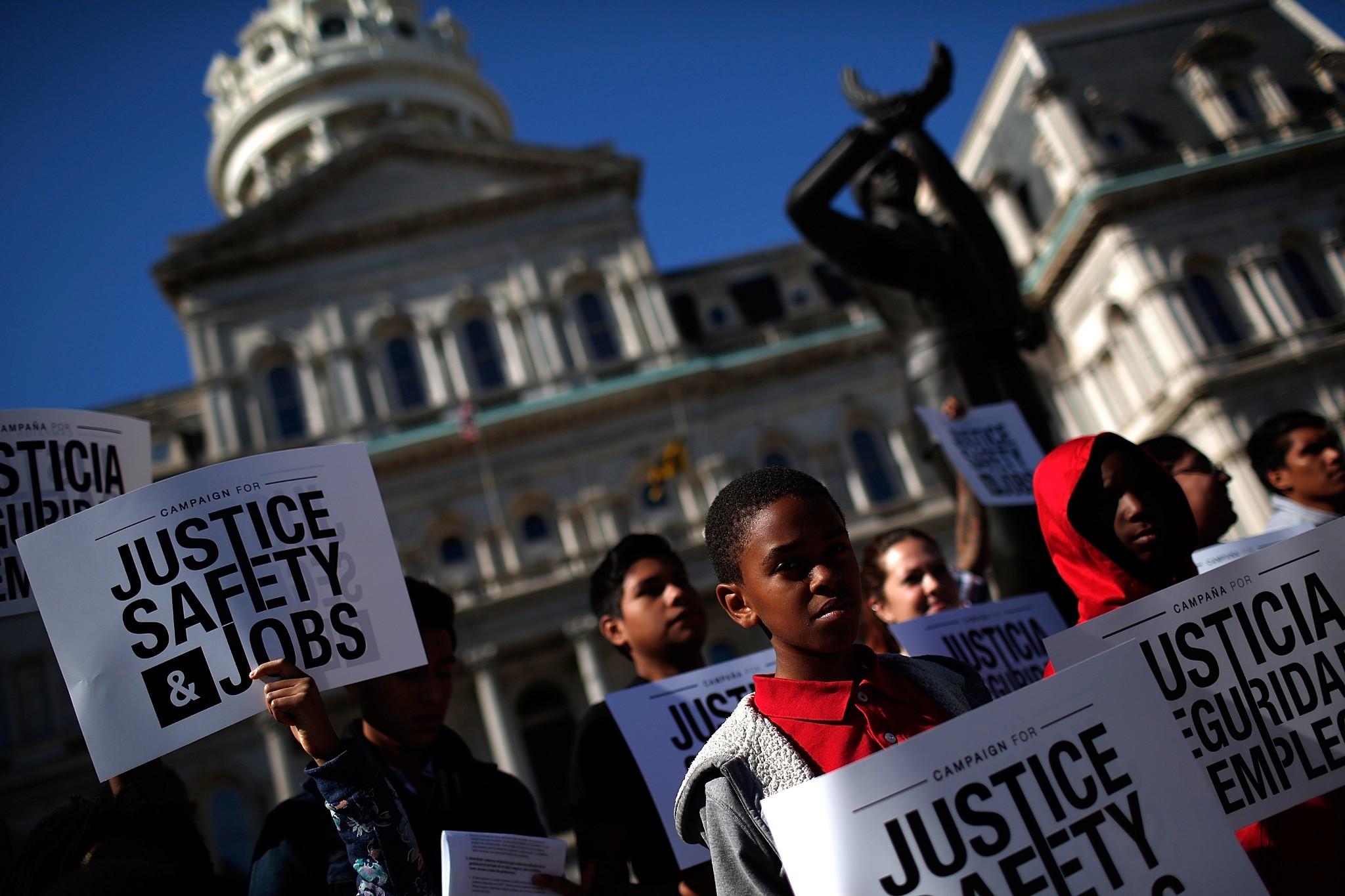Baltimore’s Latest Plan To Clamp Down On Crime: Tricking And Trapping Youth
Once again, police are vilifying kids.

With the number of lethal and nonlethal shootings, robberies, and assaults on the rise in Baltimore, police and government officials are clamoring for ways to make sense of what is happening and stem the violence. There’s been public finger pointing and posturing, but there isn’t a consensus about who among them should be blamed for the current dilemma. Some say the responsibility falls on judges. Some say it is the fault of State’s Attorney Marilyn Mosby. Others say Mayor Catherine Pugh is the problem. But there is at least one narrative that the Baltimore Police Department, city leaders, and some community members seem to agree on: that crime isn’t just an adult problem but a juvenile one as well.
To hear them tell it, youth in Baltimore have gone stark raving mad — robbing, assaulting, breaking property, and swearing in front of children. They are miscreants who are “out of control” and committing a “rash of violent juvenile attacks” and “wreaking havoc.” They are kids who must be stopped. But a new approach to tackling these so-called violent culprits points to a much more unnerving problem: that Baltimore is reviving disastrous narratives about kids that prevailed during the 1990s.
During a public safety event early this month, Baltimore Police Commissioner Kevin Davis announced a new decoy unit of undercover, “young-looking officers” that will patrol the streets for misbehaving youth. “I’m convinced that these juvenile offenders travel in packs. I’m convinced that they look for people who appear vulnerable to them,” he said.
At a press conference days later, Davis noted that many violent crimes are committed by repeat offenders who have been arrested and released. “They either need to be interrupted with a jail cell or some other type of intervention. But the way we’re doing it now is not working,” he said. The commissioner has also decried the number of kids transferred from adult court to juvenile court. In addition to the new decoy unit, more officers will be stationed in South Baltimore and the Inner Harbor, two of five neighborhoods with the most white residents.
“For the rest of the year, you will see an enhanced police presence, and that is not going to go away,” Davis reportedly told an applauding crowd.
Not everyone is clapping, though.
“It, for me, sounds like a return of the myth of the superpredator,” juvenile public defender Jennifer Egan told In Justice Today. “Baltimore police, media, and public officials have started using the same fear-mongering terms — roving gangs, violent youth, brazen attacks — the exact same language that [John] Dilulio, criminologists, and police used in the 1990s to vilify black youth in urban centers.”
While this year has seen an uptick in juvenile arrests for assault, carjacking, and robbery, BPD hasn’t said definitively that more crime is actually happening. What is clear, though, is that juvenile crime has been trending downward for years. Between 2014 and 2016, juvenile complaints fell 38 percent. Juvenile homicide rates have also plummeted for decades. Despite a recent spike in murders and shootings in Baltimore, kids haven’t been committing them, Egan says. Yet the rhetoric surrounding the new police unit and recent assaults does not reflect this reality, according to the public defender. Instead, it is re-upping racialized narratives that previously painted kids as monsters and led to their mass incarceration.
“Kids are not mini adults,” Egan said. “All kids are kids. Another way to describe ‘brazen daylight attacks’ is ‘immature, impulsive, and unsophisticated.’” And the Supreme Court agrees with her. More than once, it has ruled that kids are reckless, irrational, susceptible to peer pressure, and impulsive — precisely because their brains aren’t fully developed. As such, they cannot be treated like adults.
The latest narratives also ignore the fact that youth are underfunded, under-resourced, and heavily policed already, says 16-year-old activist Chelsea Gilmer of the Baltimore Algebra Project, an organization that fights for education and human rights of local youth. For instance, bus stops have turned into their own “gated communities” due to barricades set up by militarized police officers, according to both Gilmer and Egan. Gilmer says patrol officers park their cars near the bus stops and brandish pepper spray and guns as a form of intimidation. “It’s really crazy to me that there’s systems put in place to target us and put us in institutions to keep us from society. But there’s not a lot of systems put in place to help us,” she said.
Egan and criminal defense lawyer Jason Downs agree that any violence committed by young people in Baltimore is not a symptom of depraved, monstrous youth but a result of systemic neglect. Downs points to the new $35 million juvenile detention facility that received three times more funding than a local job program for the city’s youth. “The idea of targeting youthful offenders by creating a unit full of ‘young looking officers’ is, at best, the equivalent of putting a Band-Aid on gunshot wound to stop the bleeding,” he said. “Until we seriously invest in deterring children from the criminal justice system, our City will not be truly safe.”
Reviving the superpredator myth while ignoring educational neglect, unsafe housing, lead paint, and other forms of societal abuse, does the exact opposite, says Egan. “Right now I’m very worried that people are trying to score political points on the backs of children who they have personally failed.”
